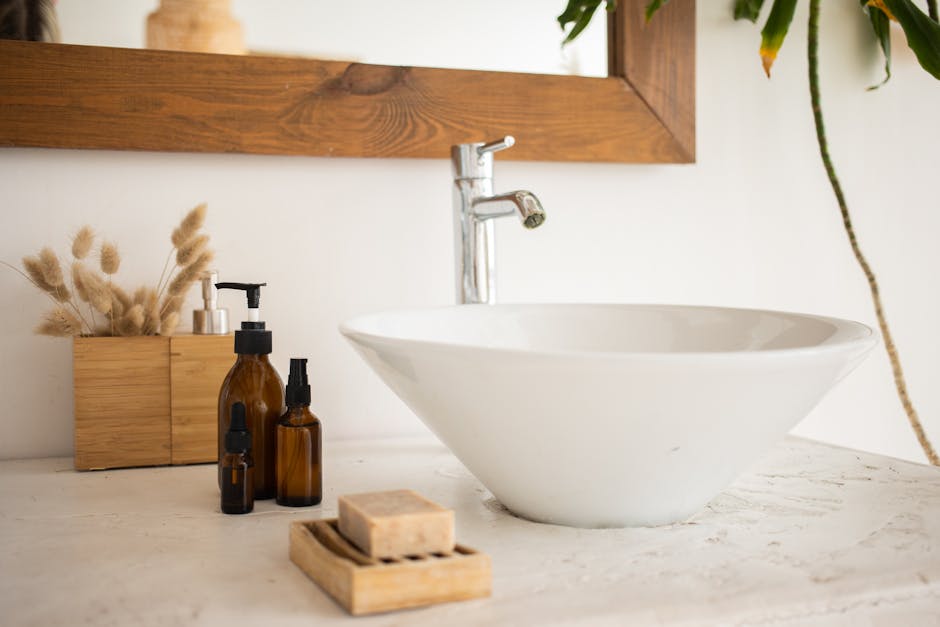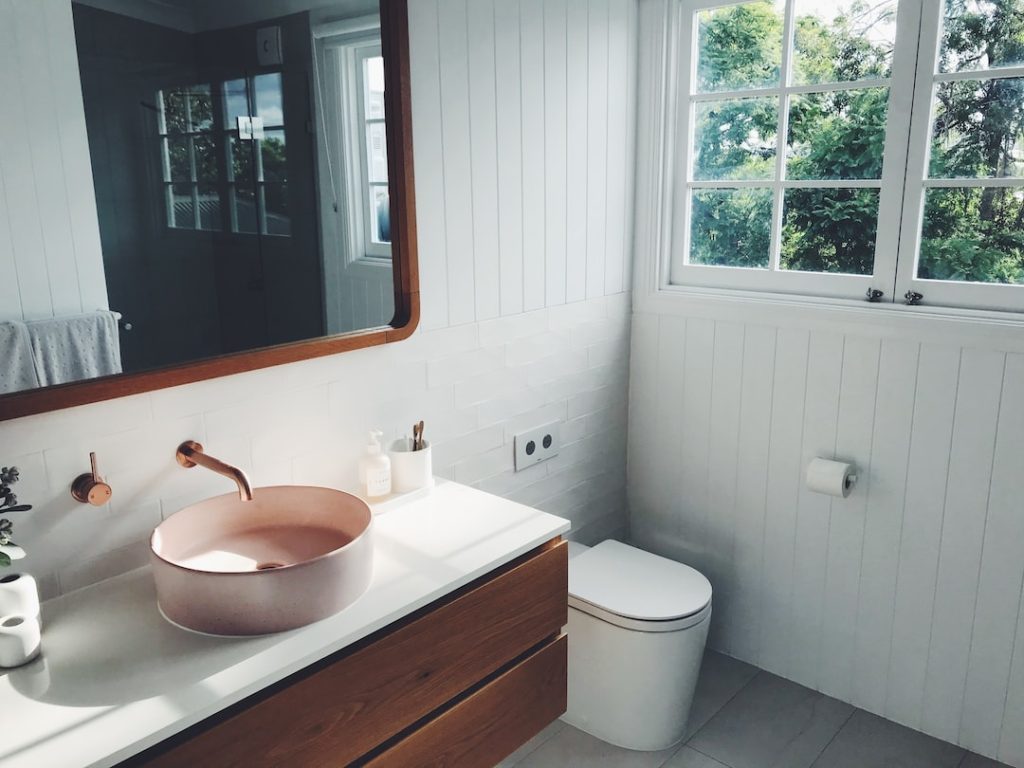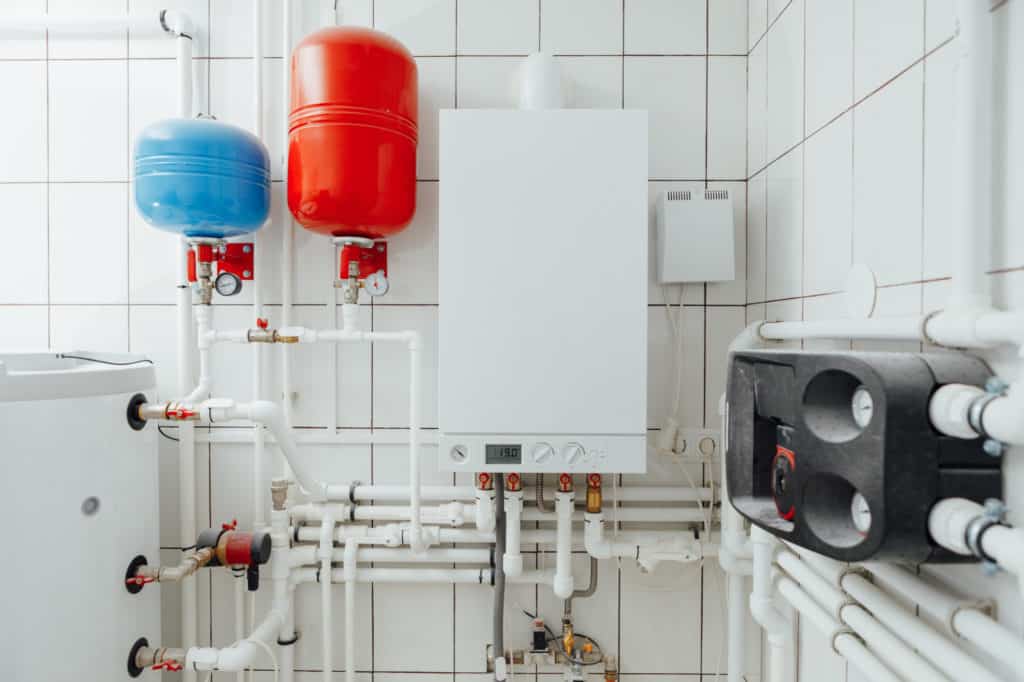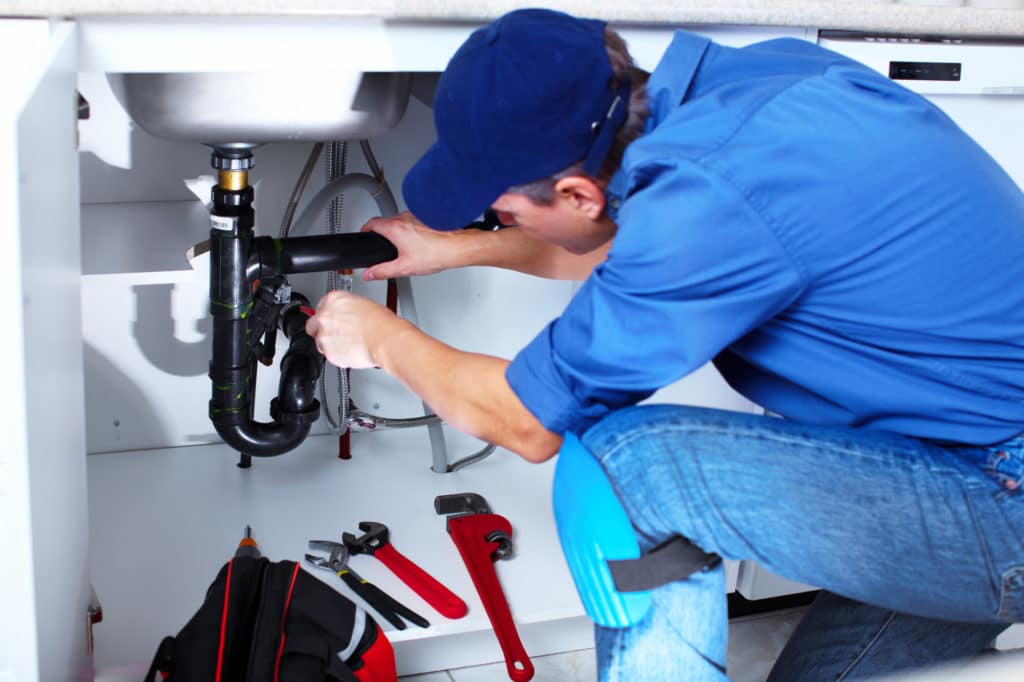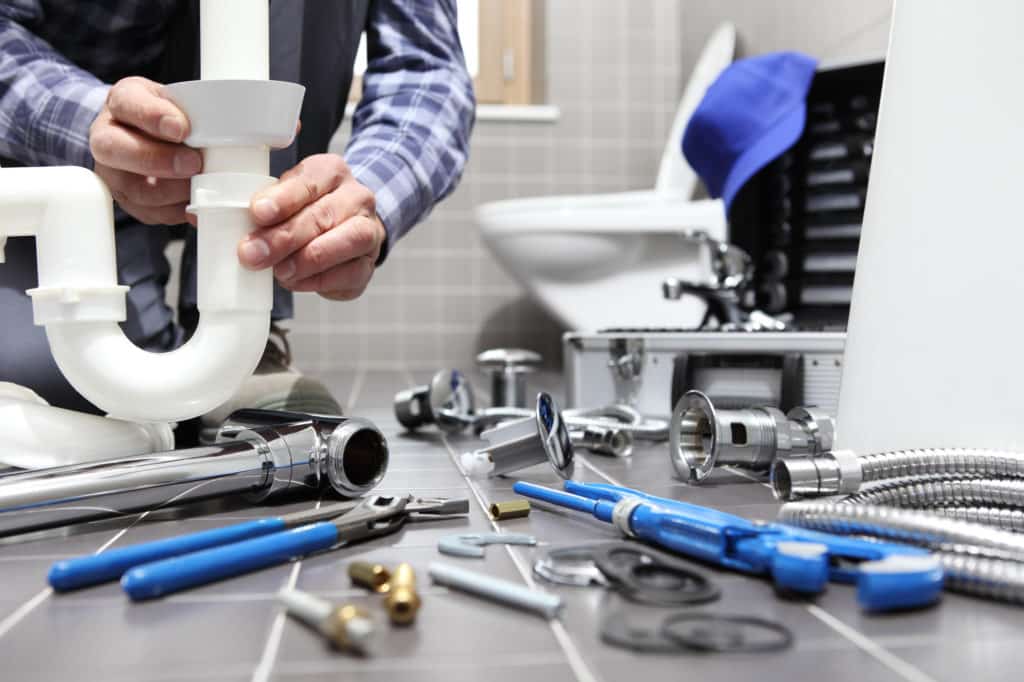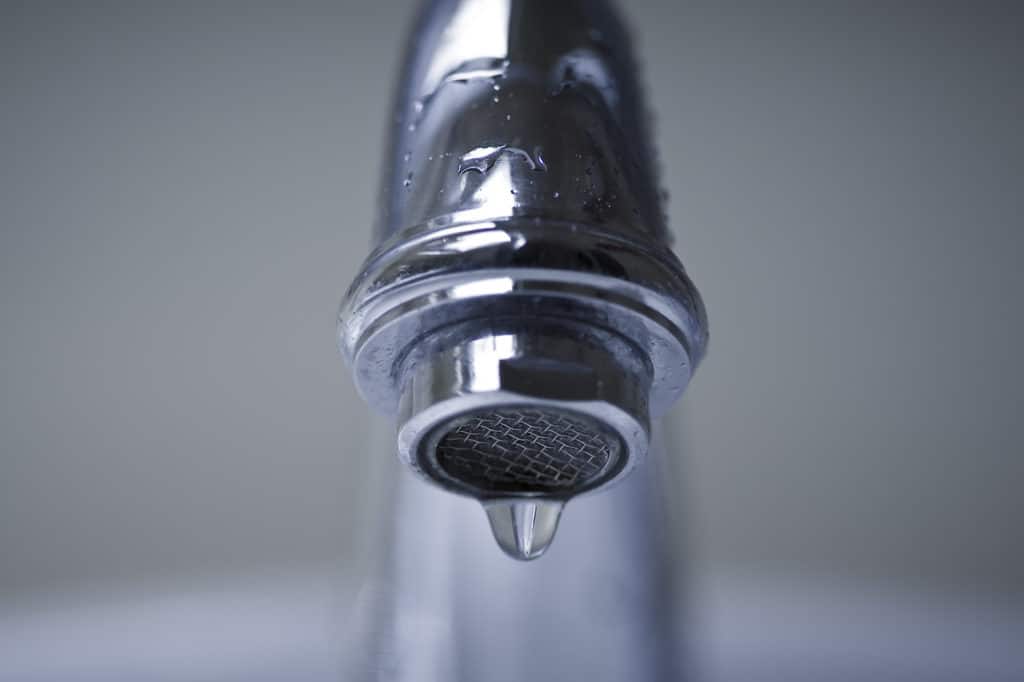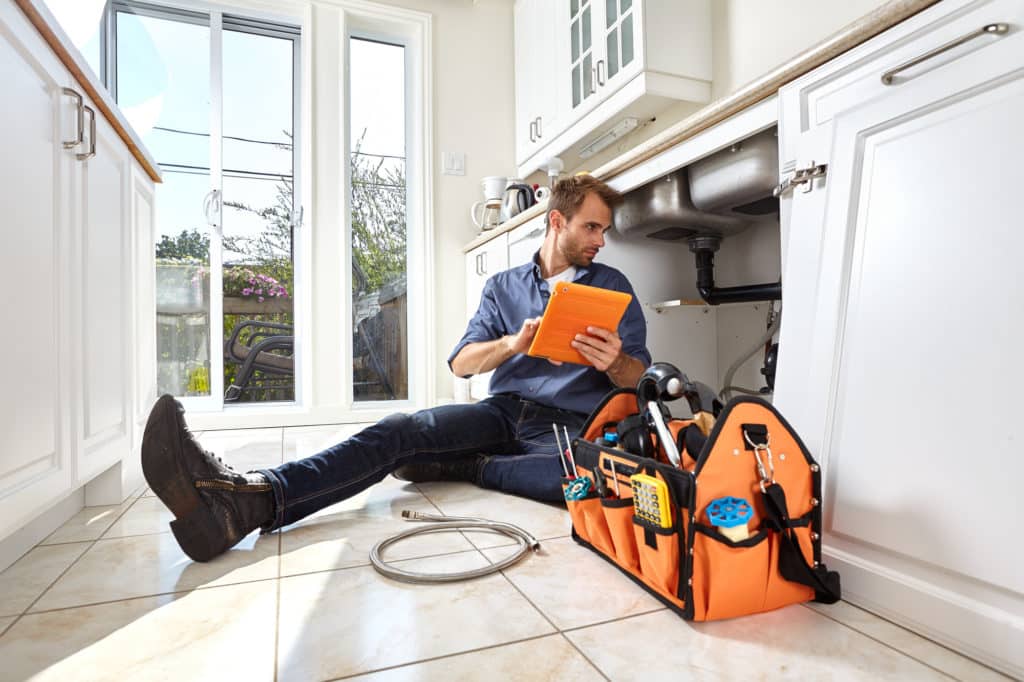Introduction
Brief Introduction to the Problem of a Dripping Bathroom Faucet
Are you listening to the rhythmic lullaby of a leaking faucet? A bathroom faucet that drips persistently can transform from a seemingly minor inconvenience into a significant annoyance quickly, especially when you understand the waste and cost involved. You may feel frustrated about witnessing a never-ending cycle of water droplets tumbling from your tap, or continually wiping up the puddle from a bathroom faucet that drips from the spout. Yet, amidst all the frustration, I assure you that there’s a silver lining.
Importance of Fixing a Leaky Faucet
You see, at Plumbing Pros DMV, we believe that something as common as a leaking faucet is more than an annoyance. As a homeowner, it’s a concern you should address immediately, not just to spare your sanity from the incessant dripping sound but also to save your hard-earned money from literally going down the drain. The United States Environmental Protection Agency (EPA) claims that small household leaks account for nearly 10,000 gallons of wasted water annually. Fixing these leaks on time could save households approximately 10% on monthly water bills.
Overview of the 7-Day Journey to Fixing the Faucet
With the right guidance and a bit of patience, you can turn the tide on the troublesome drip within a week. In fact, that’s precisely what we aim to show you – a simple, 7-day journey to restore your bathroom faucet to its proper, drip-free state. This journey is achievable for even the most casual DIY enthusiast and requires standard tools you might already have in your home maintenance kit.
As a quick overview, here’s what our 7-day repair plan involves:
- Understand the cause of the leak.
- Gather the necessary tools and replacement parts.
- Deactivate the water and disassemble the faucet.
- Detach and inspect the valve stem and other parts.
- Replace the damaged parts and sanitize the valves.
- Reassemble the faucet and test for leaks.
- If needed, seek professional help from Plumbing Pros DMV.
Now, brace yourself as we dive deeper into each step, guiding you to turn an annoying drippy faucet into a valuable learning experience and, ultimately, a victory for your inner handyman!
And of course, we have a handy guide to remind you of the primary reasons why bathroom faucets might start to leak:
- Worn-out internal washer – Repeated use and friction may cause the rubber washer inside the faucet to wear down, allowing water to leak/drip.
- Faulty O-rings – O-rings, especially those in cartridge faucets, can become loose or wear out over time and break.
- Corroded valve seat – Deposits from hard minerals in water can corrode the valve seat; also, improper installation of washers might affect the seal and cause leaking.
Understanding the Causes of a Dripping Faucet
Before we embark on our 7-day journey to fix a bathroom faucet drip, it’s critical we understand the root causes. As James D, our CEO and an expert in all things plumbing here at Plumbing Pros DMV, notes, a dripping faucet can be caused by a variety of issues. Some of the primary culprits include a damaged cartridge, broken washers, water pressure issues, malfunctioning O-rings, and deteriorated valve seats.
Damaged Cartridge as a Cause of Faucet Drip
A cartridge faucet relies on a cartridge to regulate the flow of water. Over time, the cartridge may wear out or loosen, leading to water leaks. In such a case, the entire cartridge needs to be replaced to resolve the issue. This is a common occurrence and is usually a straightforward fix.
Broken Washers Leading to Faucet Drip
Washers play a crucial role in preventing leaks by maintaining a tight seal against the valve seat. However, incorrectly installed washers or those that have deteriorated over time can allow water to leak through the faucet. This is often the case when a bathroom faucet drips from the spout.
Water Pressure Issues Resulting in Faucet Drip
Is your faucet drip starting or increasing when you turn on other water fixtures? In such cases, the issue might be water pressure. High water pressure can cause stress on the faucet, leading to leaks. If you suspect this to be the case, it’s best to call a professional plumber.
Malfunctioning O-Rings Causing Faucet Drip
O-rings keep the faucet handles in place, but they can loosen or wear out over time. If your faucet is dripping near the handle, it might be due to a worn-out O-ring. Replacing the O-ring often resolves this type of leak.
Deteriorated Valve Seats as a Cause of Faucet Drip
The valve seat is the connection point between the faucet and the spout. Over time, water sediment may collect in this area, leading to corrosion and subsequently, leaks. Drips stemming from the valve seat usually occur near the spout.
Understanding these common causes of a dripping faucet is the first step towards fixing the issue. In the following sections, we’ll walk through a step-by-step guide on how to address each of these problems, turning your dripping nuisance into a drip-free faucet in just seven days.
Day 1-2: Deactivating the Water and Disassembling the Faucet
Overcoming a bathroom faucet drips from spout issue might seem daunting at first, but with a step-by-step approach, it’s quite manageable. It all begins with deactivating the water and disassembling the faucet.
Steps to Deactivate the Water
The first step is to turn off the water supply. You’ll usually find the shut-off valves under the sink. Simply turn these clockwise to halt the water flow. If you’re having trouble with these valves or they’re not present, you can turn off the main water valve. This master switch is typically located near the exterior water meter.
If you’re unsure how to access this, your local municipal water service can provide guidance. It’s crucial to ensure the water supply is off before proceeding to prevent any accidental spills or floods.
Process of Disassembling the Faucet Handles
With the water supply safely turned off, it’s time to disassemble the faucet. Start by turning both handles to the “on” position to empty the faucet of any remaining water. To prevent losing any small parts or tools, close the sink drain and place a towel inside the sink.
Now, using an Allen wrench, remove the screw located on the faucet handle. This screw, also known as the set screw, might be hidden under a decorative cap. If so, gently pry it off with a Phillips flathead screwdriver. Once the handle is removed, you can access the faucet cartridge located inside the faucet.
At Plumbing Pros DMV, we understand that this can seem intimidating, especially if you’re not familiar with plumbing repairs. However, with a methodical approach, patience, and the right tools, you can successfully disassemble your faucet and prepare it for inspection and repair.
In the next section, we’ll discuss how to detach the valve stem and inspect the faucet components for damage. Stay tuned, if you encounter any difficulties, our expert team is just a phone call away.
Day 3: Detaching the Valve Stem and Inspecting the Parts
How to Detach the Valve Stem
When a bathroom faucet drips from the spout, the culprit could very well be within the faucet’s internal components. As your faucet’s innermost part, the valve stem is a critical piece to inspect and potentially replace.
With your faucet disassembled, you should now be able to see the valve stem. Using an adjustable wrench, turn the valve stem counterclockwise to detach it. Be careful not to exert too much force as this might damage the faucet further.
If you’re not confident about this step or encounter any difficulties, reach out to us at Plumbing Pros DMV. We’re always ready to assist you.
Inspecting the Parts for Damage
Once the valve stem is detached, it’s time to carefully inspect the faucet’s internal parts for any signs of damage or wear. These parts include the cartridge, washer, O-rings, and springs.
Look closely for any signs of cracks, corrosion, or excessive wear on these components. If you notice that the washer is damaged or worn out, this could be the reason for your dripping faucet.
Don’t forget to also check the valve seat (where the valve stem connects to the faucet). Water sediment often collects here, causing the valve seat to deteriorate over time, which can result in a dripping faucet.
Remember that different faucets require different approaches when it comes to repairs, so ensure that you’re checking the right parts for your specific type of faucet.
In the next section, we’ll discuss how to replace any damaged parts and sanitize the valves. But remember, if this process feels overwhelming or you’re unsure about what to do, we at Plumbing Pros DMV are just a call away, ready to help you fix your leaking faucet.
Day 4-5: Replacing Damaged Parts and Sanitizing the Valves
After successfully detaching the valve stem and inspecting the parts, it’s now time to replace the damaged parts and sanitize the valves. This crucial step not only fixes the issue of ‘bathroom faucet drips from spout’ but also prolongs the life of your faucet. Let’s go through the steps one by one.
Steps to Replace Damaged Parts
1. Identify Damaged Parts: Based on your inspection, identify the parts that need replacement. This could be the washer, the O-ring, or the cartridge.
2. Find the Right Replacement: Head to your local hardware store or order online the correct replacement parts. Ensure to get the right size and type for your faucet.
3. Replace the Damaged Part: If it’s the washer or O-ring that’s damaged, remove the old one and replace it with the new one. If it’s the cartridge, you’ll need to insert the new cartridge into the faucet body. Ensure all the parts are correctly fitted and secured.
How to Sanitize the Valves
Once the replacements are in place, it’s time to sanitize the valves. Over time, mineral buildup can occur in the valve body, which can affect the faucet’s performance. Here’s how you can clean it:
1. Pour Vinegar: Pour white vinegar over the valve seat and let it soak for a couple of minutes. Vinegar is a natural and effective cleaning agent that can remove mineral buildup.
2. Scrub the Valve: After soaking, scrub away the vinegar and the dissolved minerals. This will restore the shininess and smoothness of the valves.
3. Rinse and Dry: Rinse the valve with water and dry it properly.
Completing these steps will ensure that your faucet is not only leak-free but also clean and sanitized. A well-maintained faucet not only looks good but also has a longer lifespan.
In the next section, we will reassemble the faucet and test it for any leaks. As always, if you need any assistance, the team at Plumbing Pros DMV is ready to help you with any faucet and plumbing installation services.
Day 6: Reassembling the Faucet
After carefully examining and replacing the damaged parts, it’s time to put the faucet back together. This might seem daunting, but don’t worry, we’ve got you covered with a step-by-step guide.
Steps to Reassemble the Faucet
-
Reinstall the Valve Stem: Start by replacing the valve stem back into the faucet body. Ensure it’s aligned properly.
-
Reattach the Packing Nut: Next, screw the packing nut back into place using your adjustable wrench. Don’t over tighten; it just needs to be snug.
-
Replace the Faucet Handle: Now, place the handle back onto the stem and secure it with the screw you removed earlier. Use your screwdriver for this.
-
Affix the Decorative Cap: If your faucet has a decorative cap, pop it back onto the handle.
The order of reassembly should be the exact opposite of how you disassembled the faucet.
Testing the Faucet for Leaks
After reassembling your faucet, it’s time to check if your efforts have paid off. Here’s how to test for leaks:
-
Turn the Water Back On: Slowly turn the water supply back on. Be sure to do it gradually to avoid a sudden rush of water that could damage your newly assembled faucet.
-
Observe the Faucet: Look at the faucet and the area around it. If your bathroom faucet drips from the spout or leaks around the handle, there might still be an issue.
-
Check Under the Sink: Don’t forget to inspect the area under the sink for any leaks.
If you’ve followed all the steps correctly and the faucet no longer leaks, congratulations! You’ve successfully fixed your leaky faucet. However, if the faucet still drips or leaks, it might be time to call in the professionals.
At Plumbing Pros DMV, we’re always ready to assist with your plumbing needs, whether it’s a stubborn leak or a full bathroom remodel. We can help ensure your faucets and other fixtures are in top shape, saving you the hassle and worry.
In the next section, we’ll discuss when to seek professional help and how we can assist.
Day 7: Seeking Professional Help from Plumbing Pros
So, you’ve spent six days diligently working on your leaky bathroom faucet, adhering to all the steps mentioned above. But what if your bathroom faucet drips from the spout still? When should you consider calling in professional help?
When to Seek Professional Help
While DIY efforts are commendable, there are instances where the expertise of a professional plumber becomes necessary. Here are some signs that it’s time to call in the pros:
1. Persistent Dripping: If, despite all your efforts, the faucet continues to drip, it’s time to call a professional. This could indicate a deeper issue that needs to be addressed, which might not be within the scope of DIY fixes.
2. Damaged Parts: If you have noticed damaged or corroded parts during your repair process, you might need a professional to replace them. Proper installation is key to preventing future drips and leaks.
3. Broken Pipes: If you suspect that the leak is due to broken plumbing pipes, it’s best to call a professional immediately. These are serious concerns that can lead to extensive property damage if not addressed promptly.
4. Unclear Problem: If you’re not sure what’s causing the leak or how to fix it, it’s best to get professional help. A qualified plumber can quickly diagnose the problem and provide an effective solution.
How Plumbing Pros Can Help
At Plumbing Pros DMV, we understand how frustrating it can be dealing with a persistent leak. That’s why we’re equipped to handle a range of plumbing issues, from simple drips to complex pipe repairs.
1. Expertise: We bring years of experience and specialized tools to the job. Whether it’s a seat wrench to remove the valve seat or an adjustable wrench for tightening loose parts, we’ve got it covered. We can look deeper into the system, identify the problem, and fix it quickly.
2. Rapid Response: We understand that plumbing issues don’t always occur at convenient times. That’s why our technicians are on call 24/7, ready to respond to your plumbing emergencies.
3. Long-Term Solutions: Our goal isn’t just to stop the immediate leak but to provide solutions that last. We carefully inspect your plumbing system, fix the current issue, and work to prevent future problems.
4. Customer Service: We believe in building enduring relationships with our clients. Even after the repair work is done, we remain accessible to guide you through any plumbing issues and propose effective solutions.
A dripping faucet isn’t just an annoyance—it’s a waste of water and a potential increase in your water bills. So, if your bathroom faucet drips from the spout despite your best DIY efforts, don’t hesitate to reach out to us. We’re here to help you achieve a drip-free home.
Conclusion
Recap of the 7-Day Journey to Fixing a Dripping Faucet
Over the course of a week, we’ve walked you through the step-by-step process of fixing a faucet that drips from the spout. Starting with understanding the causes, which can range from damaged cartridges, broken washers, to malfunctioning O-rings, and deteriorated valve seats. We then moved on to a detailed day-by-day guide on how to deactivate the water supply, disassemble the faucet, inspect and replace damaged parts, sanitize the valves, and finally, reassemble and test the faucet.
Final Thoughts on the Importance of Fixing a Leaky Faucet
A leaky faucet is more than just a minor inconvenience. The continuous dripping can add up to a significant amount of water waste, potentially leading to higher water bills. According to the United States Environmental Protection Agency (EPA), household leaks can waste nearly 10,000 gallons of water each year. Addressing faucet leaks promptly can prevent this wastage and save you about 10% on monthly water bills.
Encouragement for DIY Plumbing Repairs
Fixing a leaky faucet may seem daunting, but as we’ve shown, it can be a straightforward process with the right tools and guidance. However, we understand that not everyone feels comfortable with DIY repairs. If you’ve tried and your bathroom faucet still drips from the spout, it’s time to call in the professionals.
At Plumbing Pros DMV, we’re dedicated to providing reliable and quality plumbing repairs. Our team is equipped to handle all sorts of plumbing issues, from stubborn leaks to more extensive repairs. We’re just a phone call away and ready to help you achieve a drip-free home.
A well-maintained home is a happy home. Don’t let a leaky faucet dampen your spirits or your wallet. Fix it yourself or let us help you. Either way, let’s stop that drip together.
For more handy tips and guidance, check out our blog and services pages.






